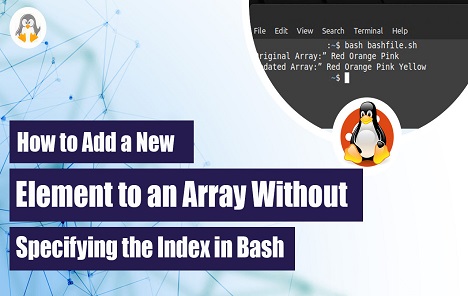
How to Add a New Element to an Array Without Specifying the Index in Bash
Bash scripting is a powerful tool for automating tasks in a Linux environment. Arrays are an important data structure in bash scripting, and they allow us to store and manipulate a collection of values. One common task in bash scripting is adding a new element to an array without specifying the index. In this article, we will discuss different methods to add a new element to an array in bash script without specifying the index. Here for illustration, I will use one of the most popular Linux Distros that is Ubuntu 22.04
Adding a new element to an array without specifying the index in Bash
In Bash, adding a new element to an array without specifying the index is a simple process. This can be done by using the += operator along with the array’s name and the new value we want to add. Without specifying the index, the following syntax can be used to add a new element to an array:
<name-of-array>+=<element-to-be-added> |
Here, “name-of-array” refers to the name of the array to which we want to add a new element, and “element-to-be-added” refers to the value we want to add to the array. To help you better grasp this, I’ve provided an example:
#!/bin/bash
# Declare an array
data=(Apple Kiwi Mango)
echo “Old_Array:” ${data[@]}
# Add a new element to the array
data+=(dates)
# Print the array
echo “new_Array:” ${data[@]}
|
Here, an array called data has three items Apple, Kiwi, and Mango and the “+= “operator is used to add the new element “dates” to the array. Using the $data[@] syntax, we have finally printed the array. As you can see, the new element date has been appended to the end of the array.

Conclusion
Adding a new element to an array in bash script without specifying the index is a common task. In this article, we discussed different methods to add a new element to an array without specifying the index. We can use the parenthesis, the “declare” command, or the “+=” operator to add a new element to an array in bash script. Each method carries its own advantages and disadvantages, and we should choose the appropriate method based on our requirements.

